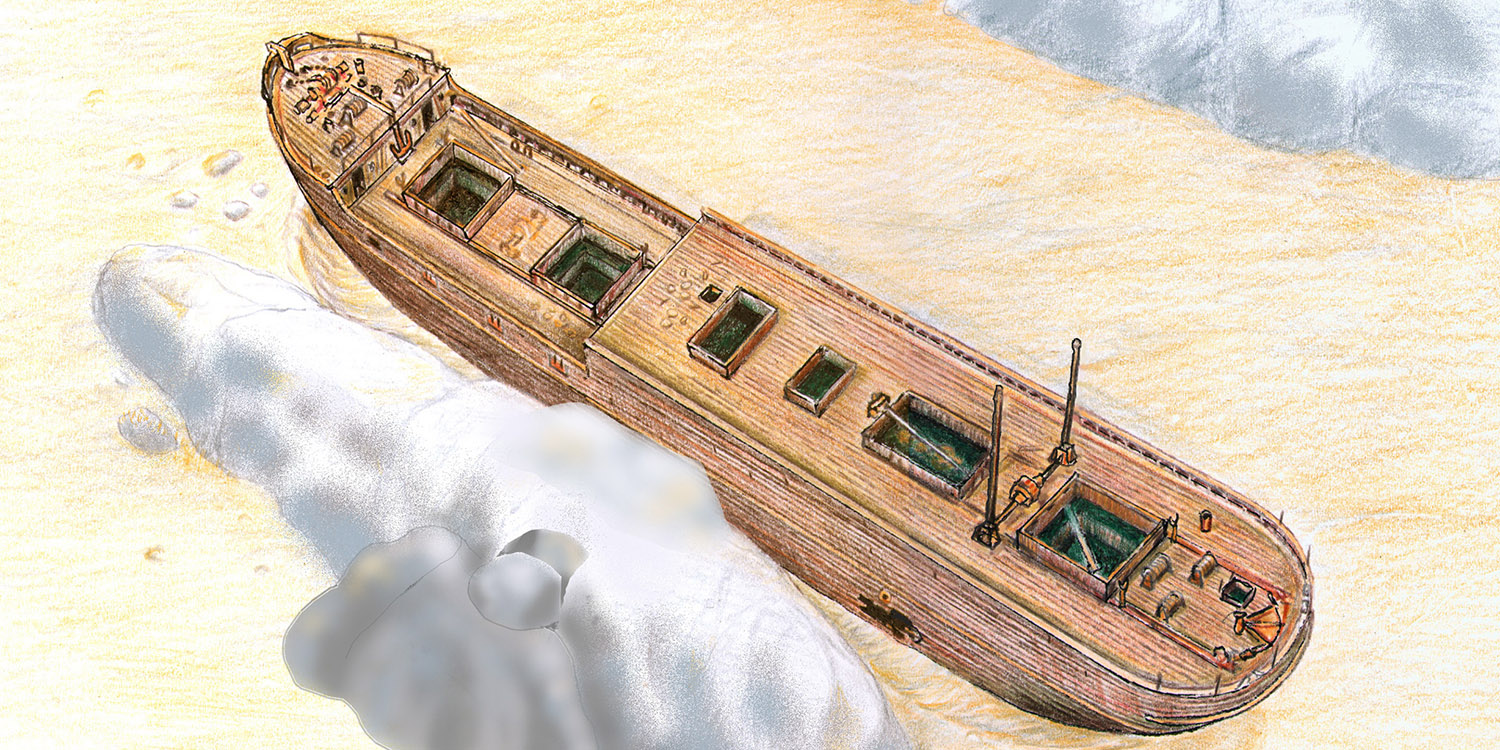War Fundy was built in 1918 by Grant & Horne in Courtenay Bay in Saint John, New Brunswick, in eastern Canada, as part of a post-World War I reconstruction programme. The need for tonnage was great and the steel supply was poor, driving the construction of several wooden cargo steamships. In 19 different shipyards, more than 125 cargo ships were built between 1917 and 1921. 53 of them were given names beginning with “War”.
The ships were built in a short time and were unlikely to be long-lived. Of the 53 War ships, only 11 remained after 1925. Several of these ships were built to the same dimensions, especially those built in wood.
One of these wooden ships was the War Fundy, which was 76.2 metres long and built in Honduras mahogany. She weighed in at 3,000 deadweight tonnes and was outfitted with modern comforts like electric lighting and wireless telegraph.
On 7 September 1920, she was headed north to Gävle with coal ordered by an ironworks in Gästrikland. The fog was dense and visibility poor. War Fundy grounded near Grundkallen’s lighthouse and got stuck on the rocks with a gaping port-side hole at the level of the engine room. The day after the grounding, the Neptune Company’s steamer Neptunus came to the site to examine the ship for salvaging, but because of the bad weather they were only able to rescue the crew and bring them to Öregrund.
When the crew left the ship, the water was at a high level and rising rapidly. The next day, the rescue ship was again out at the scene attempting to perform a salvage operation. But strong winds and high seas made the attempt unsuccessful. Soon after, she slid off the rocks and sank.


